Viola da gamba Pardessus de viole à six cordes
Flemish, c. 1710
Catalog 94. Viola da gamba, pardessus, six-string, Flemish, ca. 1710
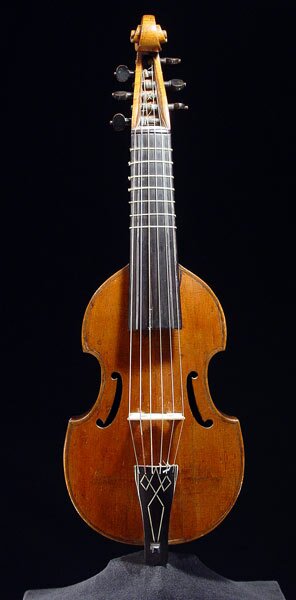 |
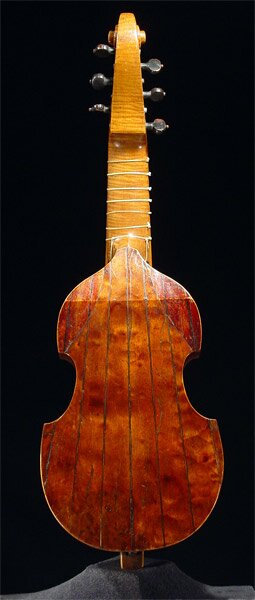 |
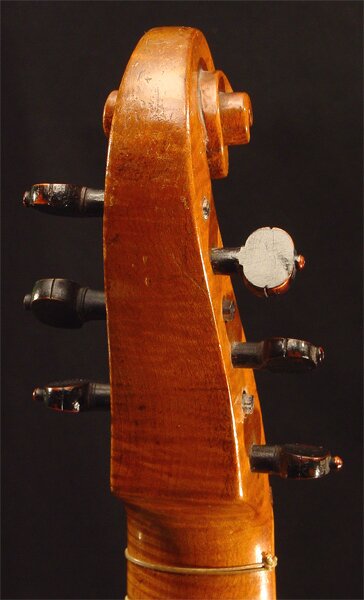 |
 |
 |
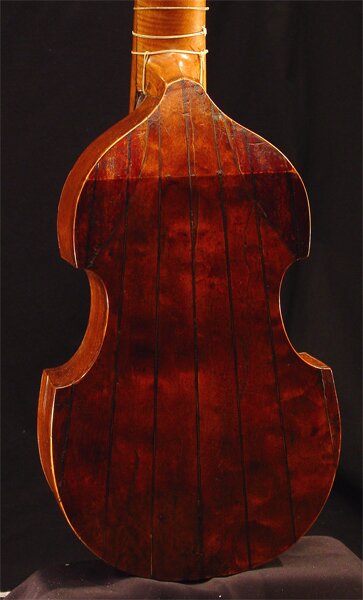 |
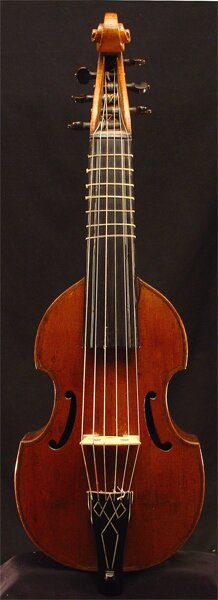
Listen the instrument in the concert
Marin Marais: Pièces en trio
Live concert in Ibiza, Spain
Informations about the previous owner
(from Manu Rubinlicht, kindly forwarded by Sophie Jasinski)
Jeanine Rubinlicht acquired the pardessus around the 1970’s, in France, most probably through an antique dealer. Besides her Baroque violin (Buson, Busan ?), she also owned a pardessus by Guersan which was purchased after her demise by Wieland Kujken. Jeanine died in 1987. The instrument was sold by Sotheby’s after the death of Jeanine Rubinlicht and entered the collection of José Vázquez.
Jeanine founded the ensemble “Alarius” around 1960, which was the first Belgian ensemble to play on ancient instruments. The trio consisted of Jeanine on violin, Charles MacGuire on traverso, Robert Kohnen, harpsichord and Wieland Kuijken, viola da gamba. MacGuire was killed in a car accident shortly after the founding of the trio and was replaced by Sigiswald Kuijen on second violin. Their recording,”Musique à Versailles”, retains its validity as an anthology which already contained all of the “future” of Baroque interpretation of French music.
The instrument was entrusted to the luthier Raymond Passauro (in Belgium) around 1976, in order to render it playable. He made a new bridge and set it up as a treble viol.
Concerning the origin of the instrument:
According to Raymond Passauro, originally it was an English cister, which has been transformed (see the very particular form of the curvature of the table and the additional pieces of wood at the top and on the back). He thinks that it was originally an English instrument for the following reasons:
In England the cisters went quickly in disuse. They were constructed from very beautiful choice wood, frequently of the best maple. Since the precious woods wre rare and venerated, the instrument makers recuperated as much as possible. for reuse.
Addenda: But according to the violin expert, Karl Moens (Belgium), the instrument is a pardessus of Flemish origin, from the beginning of the 18th C. In the case of our small viol, the back of a cister became its back, with the additions which can be seen, in order to make the shoulders of the viol. The table is also very particular: in two parts. It*s curvature is very slight, more rather “angled”, a technique typical of the English.
The english makers frequently made the bellys of the large viols in 3 or 5 parts (at times bent with heat) in order to economise on wood. In fact, since these were rare and expensive, this technique permitted the minimisation of the volume of wood used. For the smaller instruments, two pieces of wood were used.
Jeanine Rubinlicht achetait le pardessus aux environs des années 1970, en France, trés probablement chez un antiquaire. Outre son violon baroque (Buson, Busan ?), elle possédait aussi un dessus de Guersan qui a été racheté à son décès par Wieland Kujken. Jeaninie est morte en 1987. L’instrument fut vendu chez Sotheby’s à la suite au décés de Jeanine Rubinlicht et est rentré dans la collection de José Vázquez.
Jeanine a fondé l’ensemble Alarius vers 1960, ce fut le premier ensemble belge à jouer sur instruments anciens. Le trio comportait Jeanine au violon, Charles Mac Guire au traverso, Robert Kohnen clavecin et Wieland Kuyken viole de gambe. Mac Guire s’est tué dans un accident de voiture très peu de temps après la fondation du trio et a été remplacé par Sigiswald Kuyken au deuxième violon. Leur disque “Musique à Versailles” reste une anthologie qui contient déjà tout le “devenir” de l’interprétation baroque de la musique française.
L’instrument a été confié au luthier Raymond Passauro (en Belgique) vers 1976, pour qu’il soit remis en l`état d’être joué. Celui-ci a fait un nouveau chevalet et l’a monté en dessus de viole.
Concernant l’origine de l’instrument:
D’après Raymond Pessauro il s’agit à l’origine d’un cystre anglais qui a été transformé (voir la forme très particulière de la courbure de la table d’harmonie et les rajoutes de bois sur le dessus de la table et au dos de l’instrument). Il pense que c’est un instrument d’origine anglaise pour les raisons suivantes:
En Angleterre, les cistres sont très tombés en désuétude. Ils étaient fabriqués dans de très beaux bois: souvent de la ronce d’érable. Les bois précieux étant rares en onéreux. les luthiers les récupéraient..
Dans le cas de notre petite viole, le dos d’un cistre est devenu le dos du petit instrument, avec les ajouts que nous lui connaissons pour faire les épaules de la viole.
La table aussi est très particulière: en deux parties. Elle est très peu courbée mais plustôt “anglée”, technique typiquement anglaise.
Les luthiers anglais faisaient souvent les tables des grandes violes en 3 ou 5 parties (parfois courbées à chaud) afin d’économiser les bois de table. En effet, ceux-ci étant rares et chers, cette technique permettait de minimiser le volume du bois nécessaire. Pour les petits instruments. les tables se faisaient en deux parties.
See also a photo of the bow that came with this instrument!
Bow for a pardessus de viole by Tourte père: Original bows
| Dendrochronology: | bass: 1636-1558 | treble: 1637-1565 |
| Do you wish to hear this instrument? |
| Body length | 322 mm |
|
Upper width
|
157 mm |
| Middle width | 116 mm |
| Lower width | 197 mm |
| Rib height | 67 mm |
| String length | 323 mm |